Bigquery Substring After Character
In BigQuery, a substring refers to a portion of a string, which can be extracted based on various conditions such as character position, length, or pattern matching. Extracting substrings from strings is a common task in data analysis and can be accomplished using different functions provided by BigQuery. One such function is SUBSTR, which allows users to extract a substring from a string.
Exploring the usage of the SUBSTR function in BigQuery
The SUBSTR function in BigQuery is used to extract substrings from a given string based on the starting position and length of the desired substring. The syntax of the SUBSTR function is as follows:
SUBSTR(string, start_position, length)
Here, “string” represents the input string from which the substring needs to be extracted. “Start_position” defines the starting index of the substring within the string, and “length” specifies the number of characters to include in the substring.
For example, consider the following query:
SELECT SUBSTR(“Hello, World!”, 8, 5) AS substring;
Output: “World”
In this example, the SUBSTR function extracts the substring “World” starting from the 8th character in the string “Hello, World!” and including the next 5 characters.
Obtaining the substring after a specific character
To obtain the substring after a specific character in a string, the SUBSTR function can be used in combination with the LENGTH function. The LENGTH function is used to determine the length of the string, and by subtracting the index of the desired character, you can obtain the remaining substring.
For instance, consider the following query:
SELECT SUBSTR(“BigQuery substring after character”, INSTR(“BigQuery substring after character”, ” “)) AS substring;
Output: “substring after character”
In this example, the INSTR function is used to find the index of the first occurrence of the space character (” “) in the input string. The SUBSTR function then extracts the substring after the space character, resulting in “substring after character”.
Using the REGEXP_EXTRACT function for extracting substrings after a character
The REGEXP_EXTRACT function is another option for extracting substrings after a specific character in BigQuery. This function allows users to extract substrings based on a regular expression pattern.
The syntax of the REGEXP_EXTRACT function is as follows:
REGEXP_EXTRACT(string, pattern)
Where “string” represents the input string and “pattern” specifies the regular expression pattern to match.
For example, suppose we want to extract the substring after the “@” symbol in an email address. We can use the following query:
SELECT REGEXP_EXTRACT(“[email protected]”, r’@(\w+.\w+)’) AS substring;
Output: “email.com”
In this example, the regular expression pattern r’@(\w+.\w+)’ is used to match the “@” symbol followed by one or more word characters, a dot, and another set of word characters. The REGEXP_EXTRACT function then extracts the desired substring “email.com”.
Handling cases where the character may or may not be present
Sometimes, the character you want to extract substrings after may or may not be present in the string. In such cases, it is essential to handle these scenarios to avoid errors or unexpected results.
One way to handle this is by using the IFNULL function. The IFNULL function checks if the result of a given expression is NULL, and if it is, it returns a specified value.
For instance, consider the following query:
SELECT IFNULL(SUBSTR(“BigQuery substring after character”, INSTR(“BigQuery substring after character”, ” “)), “”) AS substring;
Output: “substring after character”
In this example, using the IFNULL function with the SUBSTR function ensures that if the desired character is not found, an empty string is returned instead of NULL.
Dealing with multiple occurrences of the character in the string
In some cases, the character you want to extract substrings after may occur multiple times in the string. In such situations, you may want to extract substrings based on the last occurrence of the character.
To achieve this, you can use the REVERSE function along with the SUBSTR function. The REVERSE function is used to reverse the input string, allowing you to find the last occurrence of a character as the first occurrence in the reversed string.
For example, consider the following query:
SELECT REVERSE(SUBSTR(REVERSE(“BigQuery substring after character”), 1, INSTR(REVERSE(“BigQuery substring after character”), ” “)-1)) AS substring;
Output: “character”
In this example, the reverse of the input string is taken, and then the SUBSTR function is applied to extract the substring starting from the first character up to the first occurrence of the desired character. The REVERSE function is then used again to reverse this substring and obtain the desired result.
Utilizing the SPLIT function to extract substrings after a character
Another approach to extracting substrings after a character in BigQuery is to use the SPLIT function. The SPLIT function is used to split a string into an array of substrings based on a specified delimiter.
The syntax of the SPLIT function is as follows:
SPLIT(string, delimiter)
Here, “string” represents the input string to be split, and “delimiter” specifies the character or string used to separate the substrings.
For example, suppose we want to extract the domain from a URL. We can use the following query:
SELECT SPLIT(“https://www.example.com”, “/”)[OFFSET(2)] AS substring;
Output: “www.example.com”
In this example, the input string “https://www.example.com” is split into an array of substrings based on the “/” delimiter. The [OFFSET(2)] is used to access the second element in the array, which represents the desired substring “www.example.com”.
Performing substring operations based on varying character positions
In some cases, the character position from which you want to extract a substring may not be fixed and may vary across different strings. In such situations, you can utilize the combination of functions like INSTR and SUBSTR to extract substrings dynamically.
For example, consider the following query:
SELECT SUBSTR(“BigQuery substring before character BigQuery substring after character”,
INSTR(“BigQuery substring before character BigQuery substring after character”, “before”)+6,
INSTR(“BigQuery substring before character BigQuery substring after character”, “after”) – INSTR(“BigQuery substring before character BigQuery substring after character”, “before”) – 7) AS substring;
Output: ” character ”
In this example, the INSTR function is used to find the positions of the “before” and “after” strings within the input string. The SUBSTR function then extracts the substring between these positions, resulting in the desired output ” character “.
Advanced techniques for substring extraction after a character in BigQuery
In addition to the above methods, there are several advanced techniques available in BigQuery for extracting substrings after a character. These include the combination of regular expressions, arrays, and other functions to handle complex substring extraction scenarios.
For instance, you can use the REGEXP_REPLACE function along with the SPLIT function to remove certain characters and then extract a substring from the resulting string.
As an example, consider the following query:
SELECT SPLIT(REGEXP_REPLACE(“BigQuery substring after , character”, “[, ]”, “”), “after”)[OFFSET(1)] AS substring;
Output: “character”
In this example, the REGEXP_REPLACE function is used to remove the comma and space characters from the input string. The SPLIT function is then applied to split the remaining string based on the “after” string, and [OFFSET(1)] is used to access the second element in the resulting array, which represents the desired substring “character”.
FAQs:
Q: Can I extract a substring after a specific character without knowing the character position?
A: Yes, you can use functions like INSTR or REGEXP_EXTRACT to find the position of the desired character dynamically and then extract the substring based on that position.
Q: How can I handle cases where the character may or may not be present in the string?
A: You can use functions like IFNULL to check if the desired character is present and return an empty string or a specified value if it is not found.
Q: How can I extract substrings after the last occurrence of a character in the string?
A: You can use the REVERSE function along with the SUBSTR function to find the last occurrence of the character as the first occurrence in the reversed string and then extract the desired substring.
Q: Can I extract substrings after a character based on varying character positions?
A: Yes, you can use a combination of functions like INSTR and SUBSTR to find the positions of the relevant strings dynamically and then extract substrings based on those positions.
In conclusion, BigQuery provides various functions and techniques for extracting substrings after a specific character in a string. Users can utilize functions like SUBSTR, REGEXP_EXTRACT, SPLIT, and various other functions to handle different scenarios and achieve the desired results efficiently. It is essential to understand the available options and choose the most suitable approach based on the specific requirements of the task at hand.
Sql Query To Get The String Before Or After Any Specific Character (Substring, Charindex)
How To Use Substring In Bigquery?
BigQuery is a powerful cloud-based data warehouse provided by Google. It allows users to perform complex data analysis using SQL-like queries. One commonly used function in BigQuery is the substring function, which allows users to extract a portion of a string based on specified starting and ending positions. In this article, we will explore the various aspects of using substring in BigQuery and provide some examples to help you get started.
The Syntax of Substring Function in BigQuery:
The syntax for using the substring function in BigQuery is as follows:
SUBSTR(input_string, start_position, [length])
The input_string parameter is the source string from which you want to extract a substring. The start_position parameter represents the position from which the extraction will start. It is important to note that BigQuery uses a 1-based index, which means the first character in the string has a position of 1.
The optional length parameter specifies the number of characters to include in the extracted substring. If this parameter is omitted, the function will return all characters from the start_position till the end of the input_string.
Examples of Using Substring Function in BigQuery:
Let’s illustrate the usage of the substring function with some examples:
1. Extracting a Fixed-Length Substring:
Assume we have a string ‘Hello World’, and we want to extract the substring ‘World’ from it. The following query demonstrates how to accomplish this:
SELECT SUBSTR(‘Hello World’, 7) AS extracted_string
The result of this query will be ‘World’.
2. Extracting a Specific Portion of a String:
Suppose we have a string ‘Customer ID: 12345’, and we want to extract only the numeric portion ‘12345’. We can achieve this using the following query:
SELECT SUBSTR(‘Customer ID: 12345’, 13, 5) AS extracted_string
In this example, we specify the starting position as 13, and the length parameter as 5. The result of this query will be ‘12345’.
3. Extracting a Substring Based on a Conditional Statement:
In some cases, you might need to extract a substring based on a certain condition. For instance, if we have a string ‘Date: 2021-01-01’, and we want to extract the year portion (2021 in this case), we can use the following query:
SELECT SUBSTR(‘Date: 2021-01-01’, 6, 4) AS extracted_string
Here, we specify the starting position as 6, which is the beginning of the year value, and the length parameter as 4, which represents the number of characters in the year. The result of this query will be ‘2021’.
FAQs:
Q: Can the substring function be used with columns in BigQuery tables?
A: Yes, the substring function can be used with columns in BigQuery tables. Instead of specifying a literal string, you can use the column name as the input_string parameter in the function.
Q: Can I use negative values for the start_position parameter in the substring function?
A: No, BigQuery does not support negative values for the start_position parameter. If you need to start counting from the end of the string, you can use the length of the string minus the desired position as the start_position.
Q: Is it possible to use the substring function to extract more than one substring at a time?
A: No, the substring function in BigQuery can only extract one substring at a time. If you need to extract multiple substrings, you will have to use the substring function multiple times or write a custom SQL query.
Q: Can I use the substring function with non-ASCII characters?
A: Yes, the substring function in BigQuery works with both ASCII and non-ASCII characters. It considers each character as a single unit, regardless of its encoding.
In conclusion, the substring function in BigQuery is a useful tool for extracting specific portions of a string, whether it’s a fixed length or based on specified positions. By understanding its syntax and various examples, you can enhance your data analysis capabilities in BigQuery.
How To Extract Numbers From String In Bigquery?
BigQuery, Google’s fully managed and serverless data warehouse, offers a plethora of functions to efficiently manage and analyze large datasets. One frequently encountered task is to extract numbers from strings stored in the tables. In this article, we will explore various methods to accomplish this task using BigQuery’s powerful string functions.
Extracting numbers from strings can find its significance in various scenarios. For example, it can be immensely useful when dealing with data related to invoices, financial transactions, phone numbers, or any other situation where you need to separate numeric values from a text-heavy string. BigQuery provides several built-in string functions that make this task easier and more efficient.
Method 1: Regular Expression
One of the most powerful ways to extract numbers from a string in BigQuery is by utilizing regular expressions. Regular expressions (regex) provide a concise and flexible means to match, parse, and manipulate strings. They can be applied to extract numbers from strings as well. The REGEXP_EXTRACT function in BigQuery helps us achieve this.
For example, consider a table containing a column named “description” that stores text descriptions along with numeric values. To extract the numbers from this column, you can use the following query:
“`
SELECT description, REGEXP_EXTRACT(description, r'(\d+)’) AS extracted_number
FROM `your_table`
“`
In the above query, the regular expression pattern `(\d+)` matches one or more digits (\d+) in the description column. The extracted_number column contains the extracted numbers from the description. By using different regex patterns, you can refine the extraction process based on your requirements.
Method 2: SPLIT and CAST
Another approach to extract numbers from strings is by using the SPLIT function along with CAST function in BigQuery. The SPLIT function splits a string into an array of substrings based on a delimiter, which can be utilized to split a string at non-numeric characters. By applying the CAST function, the resulting substrings can be converted to numeric values.
Consider the following query:
“`
SELECT description,
CAST(SPLIT(description, ‘ ‘)[OFFSET(0)] AS INT64) AS extracted_number
FROM `your_table`
“`
In the above query, we split the description string by space (‘ ‘) delimiter and capture the first substring using the `OFFSET(0)` function. The CAST function is then used to convert the extracted substring into an INT64 type. Adjust the OFFSET value based on the position of the numeric value in the original string.
Method 3: REGEXP_REPLACE
Sometimes we may want to extract a numeric value while simultaneously removing it from the original string. In such cases, we can utilize the REGEXP_REPLACE function in BigQuery. This function finds and replaces the specified pattern within a string.
Consider the following query:
“`
SELECT description,
REGEXP_REPLACE(description, r'(\d+)’, ”) AS description_without_number,
REGEXP_EXTRACT(description, r'(\d+)’) AS extracted_number
FROM `your_table`
“`
In the above query, the REGEXP_REPLACE function removes the numeric value from the description and stores it in the description_without_number column. The REGEXP_EXTRACT function, as explained earlier, extracts the numeric value into the extracted_number column.
FAQs:
Q1. Can I extract multiple numbers from a single string?
Yes, you can extract multiple numbers from a single string by applying the appropriate regex pattern or by using a combination of regex and other string functions as demonstrated in the previous methods. Employing loops or iteration might be required in some cases.
Q2. What if the numeric values I want to extract have decimal places?
If you need to extract numbers with decimal places, adjust the regex pattern accordingly. For example, to extract numbers with either a dot or comma as decimal separators, you can use the pattern `(\d+[.,]?\d*)`.
Q3. How can I handle negative numbers?
To include negative numbers in the extraction process, modify the regex pattern to handle optional negative signs. For instance, you can use the pattern `-?(\d+[.,]?\d*)`.
Q4. Can I use these methods with nested or repeated fields?
Yes, these methods can be applied to nested or repeated fields. Simply adapt the query syntax to reference the desired nested or repeated field accordingly.
Q5. Are there any performance considerations when extracting numbers from strings in BigQuery?
While BigQuery is highly optimized for performance, the efficiency can vary depending on the complexity of the regex pattern and the size of the dataset. Regular expressions with intricate patterns might impact query performance, so it is advisable to benchmark and test with representative datasets to ensure optimal execution.
In conclusion, extracting numbers from strings in BigQuery can be accomplished using various techniques such as regular expressions, string splitting, and replacing patterns. Understanding the structure of your strings and applying the appropriate method for your needs will enable seamless extraction of numbers. Utilize the rich set of string functions provided by BigQuery to efficiently analyze and derive insights from your data.
Keywords searched by users: bigquery substring after character Bigquery substring before character, Search function bigquery, bigquery extract string between two characters
Categories: Top 61 Bigquery Substring After Character
See more here: nhanvietluanvan.com
Bigquery Substring Before Character
Introduction:
In the realm of data analysis, extracting valuable insights from a massive amount of information is a common challenge faced by analysts and data scientists. Google BigQuery, a fully-managed data warehouse solution, has emerged as a powerful tool to tackle this problem. Among the vast array of functions it offers, the substring before character function plays a prominent role in extracting specific segments of text data from a given field efficiently.
In this article, we will delve into the world of BigQuery’s substring before character feature, exploring its functionalities, use cases, and potential benefits. By the end, you will have a solid understanding of how to utilize this function effectively to enhance your data analysis workflows.
Understanding the BigQuery Substring Before Character:
The substring before character function, STRING_SPLIT, in BigQuery allows you to extract a specific segment of text that appears before a given character within a larger string. This function helps in cleaning, transforming, and exploring data by isolating fragments of text that are crucial for analysis.
Usage and Syntax:
The syntax for BigQuery substring before character function is as follows:
“`SQL
SUBSTRING_INDEX(string, delimiter, count = 1)
“`
In this syntax:
– `string` represents the original text or field.
– `delimiter` is the character that determines where the substring should stop its extraction.
– `count` (optional) specifies the occurrence number of the delimiter from the beginning of the string. By default, it is set to 1, indicating the first occurrence of the delimiter.
By implementing the appropriate parameters within the function, you can extract the desired part of the text efficiently.
Example Use Cases:
The flexibility of the substring before character function allows for a wide range of use cases. Here are a few scenarios where this function proves beneficial:
1. Extracting Domains from URLs:
A common task in web analytics is extracting domain information from the URL. Using the substring before character function, you can efficiently extract the domain part from a URL field. For instance, if you have a URL field like “https://www.example.com/page1,” you can extract just the domain part, “www.example.com,” by specifying the delimiter as the forward slash (“/”).
2. Extracting File Extensions:
When dealing with file names, extracting the file extension can be crucial for further analysis. Using the substring before character function, you can effortlessly extract the file extension from a given file name. For example, by specifying the delimiter as the dot (“.”) for a filename like “report.docx,” you can obtain just the “docx” part.
3. Separating Name and Surname:
In cases where you have a single field for both the first name and the last name, the substring before character function comes in handy. By specifying the delimiter as a space (” “), you can conveniently extract the first name and the last name into separate fields, improving the organization and readability of your data.
Benefits of BigQuery Substring Before Character:
1. Enhanced Data Cleaning:
The substring before character function enables analysts to efficiently clean up messy data by extracting specific segments that are necessary for analysis. Whether it is removing unwanted prefixes, extracting essential parts, or splitting data into meaningful components, this function streamlines the data cleaning process.
2. Improved Data Transformation:
By effectively extracting subsets of text, analysts can transform their data into a more structured format, facilitating easier downstream analysis and modeling. The substring before character function allows for the separation of complex or concatenated data into meaningful elements, enabling better data utilization.
3. Time Efficiency:
BigQuery’s substring before character function is designed to handle large-scale data efficiently. As a fully-managed data warehouse solution, BigQuery optimizes query performance, ensuring fast and scalable substring extraction even with millions of records. This contributes to faster data analysis workflows, enhancing overall productivity.
FAQs:
Q: Can STRING_SPLIT function extract the substring after the character?
A: No, the STRING_SPLIT function focuses on extracting the substring before the character. To extract the substring after the character, you can use the BigQuery substring function (SUBSTRING) in combination with other functions like LENGTH and INSTR.
Q: Can I specify multiple delimiters to extract the substring before?
A: Unfortunately, the STRING_SPLIT function only accepts a single delimiter. However, you can utilize the STRING_SPLIT function multiple times, each time using a different delimiter, to extract multiple substrings if needed.
Q: Does the BigQuery substring before character function have any limitations?
A: Although the substring before character function is powerful, it is important to note that it works based on specified delimiters. If the delimiter is absent from the string, the function may not return the expected results.
Q: Can the substring before character function handle non-ASCII characters?
A: Yes, the substring before character function fully supports non-ASCII characters. It can effectively handle and extract substrings based on non-ASCII delimiters.
Conclusion:
The BigQuery substring before character function proves to be a versatile tool for data cleaning, transformation, and exploration. With its simple syntax and powerful capabilities, analysts can efficiently extract specific segments of text data, streamline data analysis, and derive valuable insights. By incorporating this function into your BigQuery workflow, you will enhance your ability to extract critical information from large datasets, ultimately improving decision-making and driving business success.
Search Function Bigquery
In today’s data-driven world, businesses and organizations rely heavily on efficient data retrieval and analysis. BigQuery, a web service introduced by Google Cloud, offers a powerful solution to store, analyze, and retrieve large datasets. One essential feature of BigQuery is its search function, which allows users to explore and extract valuable insights from massive amounts of data. In this article, we will delve into the capabilities of the search function in BigQuery and how it can revolutionize the way data is handled.
Understanding the Basics:
The search function in BigQuery enables users to scan large datasets and quickly discover relevant information. By leveraging search queries on structured data, users can efficiently extract specific data points or patterns from tables. BigQuery’s search function is built on Google Search infrastructure, which guarantees scalability, speed, and accuracy in search results.
Importance of Search Function in BigQuery:
1. Efficient Data Exploration: BigQuery’s search function eliminates the need for time-consuming manual data exploration. It allows users to focus on their analysis by quickly filtering out the relevant data based on specific search queries. This significantly speeds up the process of extracting insights and facilitates quicker decision-making.
2. Complex Queries Made Simple: BigQuery not only supports SQL-like syntax for basic queries but also provides advanced functionality like full-text search, regular expressions, and approximate string matching. This empowers users to perform complex searches without compromising the simplicity of query formulation.
3. Accurate and Scalable Results: The search function in BigQuery leverages Google’s search infrastructure, ensuring precise and reliable search results. Even with massive datasets and concurrent queries, the search function maintains high performance and scalability, allowing businesses to handle large volumes of data effectively.
4. Cost Optimization: With the search function, BigQuery minimizes the amount of data that needs to be processed. Instead of scanning the entire dataset, users can narrow down their search to specific columns, reducing costs associated with unnecessary data processing.
Common Use Cases:
1. E-commerce: Online retailers can utilize BigQuery’s search function to identify trends in customer behavior, analyze purchasing patterns, and gain insights into emerging demand. By searching for specific products, user preferences, or transactional data, businesses can optimize their marketing strategies and personalize customer experiences.
2. Ad Analysis: Digital advertisers often deal with vast amounts of campaign data. BigQuery’s search function enables them to search keywords, ad placements, or any other relevant metrics to analyze campaign performance. Advertisers can quickly identify successes, understand user engagement, and fine-tune their marketing strategy in real-time.
3. Fraud Detection: Detecting fraudulent activities requires sifting through large volumes of transactional data. With BigQuery’s search function, fraud analysts can efficiently search for suspicious patterns, anomalies, or anomalies, enabling them to rapidly detect and respond to potential threats.
4. Healthcare Analytics: Healthcare providers can utilize the search function in BigQuery to analyze patient data and patterns. Searching for medical conditions, symptoms, or treatments can lead to valuable insights for patient care, population health management, and medical research.
FAQs:
Q1. Is the search function available for all data types in BigQuery?
Yes, the search function in BigQuery is applicable to all data types, including structured, semi-structured, and unstructured data. It ensures flexibility in searching across a wide range of datasets.
Q2. Can the search function integrate with other analysis tools?
Absolutely! BigQuery’s search function can seamlessly integrate with other analysis tools like Google Data Studio or Jupyter Notebooks. This integration allows users to explore search results visually or perform advanced statistical analysis.
Q3. Does the search function use AI or machine learning algorithms?
BigQuery’s search function does not rely on AI or machine learning algorithms specifically for search queries. However, it can be combined with other AI-powered features in BigQuery to enhance data analysis, such as sentiment analysis, entity recognition, or recommendations.
Q4. Can the search function handle real-time data?
Yes, the search function in BigQuery supports real-time data ingestion and processing. It efficiently handles real-time queries, enabling businesses to derive insights from streaming data for immediate decision-making.
Q5. Does the search function require any specific programming skills?
No, the search function in BigQuery can be utilized without any specific programming skills. Users can leverage SQL-like syntax, which is widely known and used in the data analysis community.
In conclusion, the search function in BigQuery offers businesses and organizations an efficient and scalable solution for data exploration and analysis. By leveraging advanced search queries, users can efficiently extract valuable insights from large datasets, saving time and enhancing decision-making processes. Whether in e-commerce, advertising, fraud detection, or healthcare analytics, the search function in BigQuery has the power to revolutionize how businesses handle and derive value from their data.
Images related to the topic bigquery substring after character
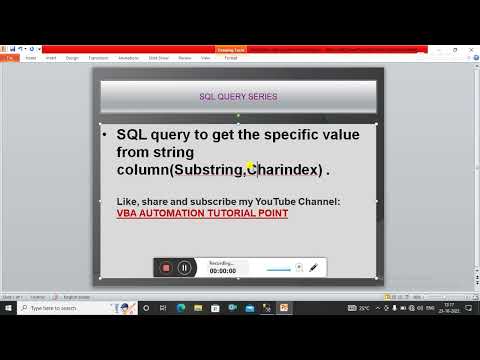
Found 32 images related to bigquery substring after character theme






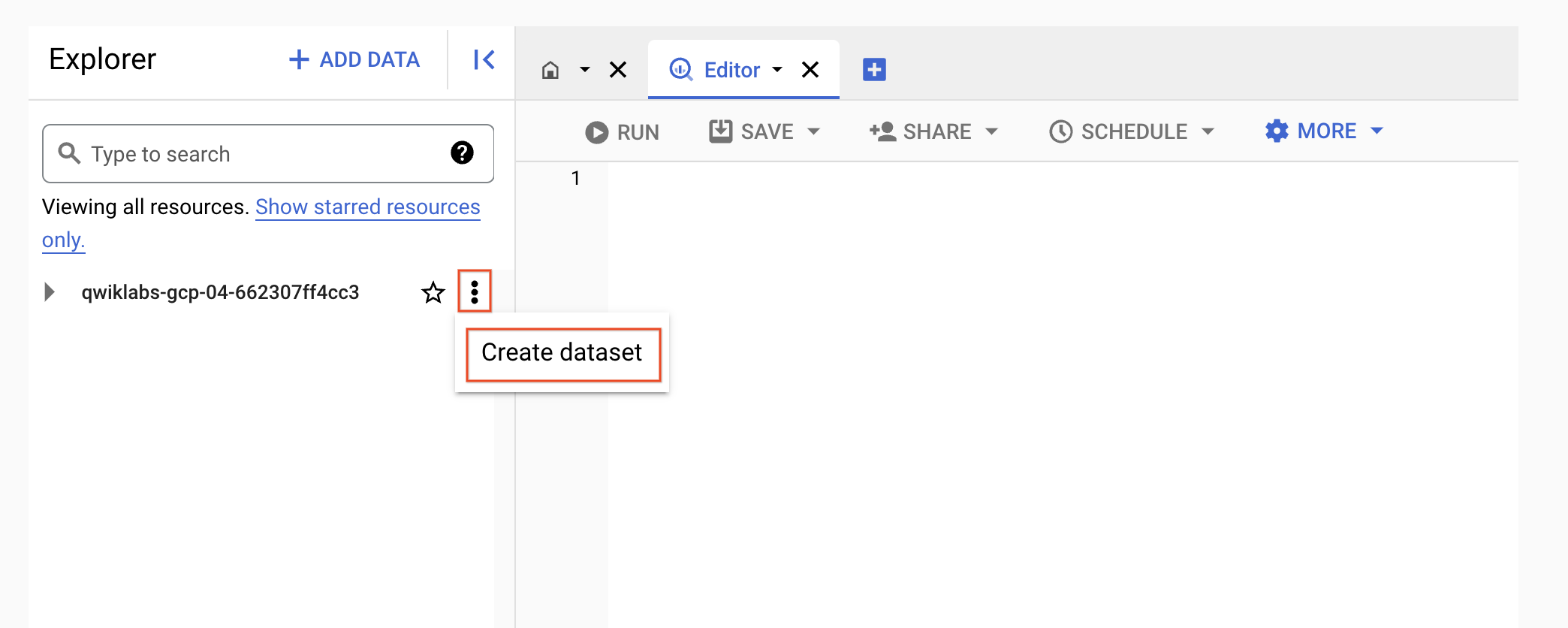

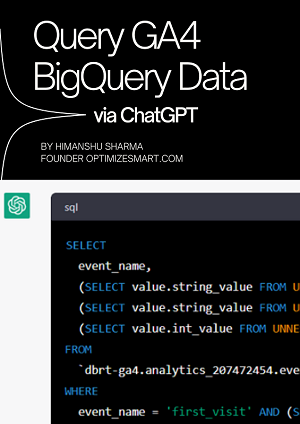


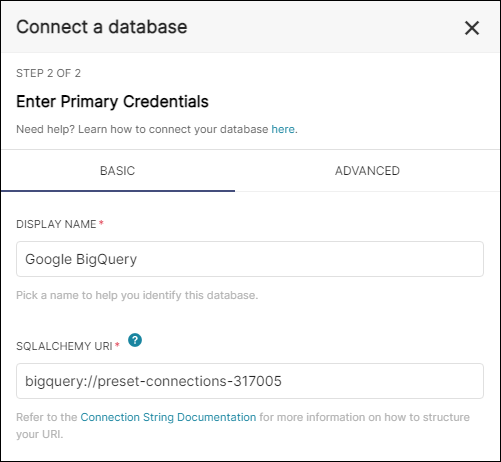



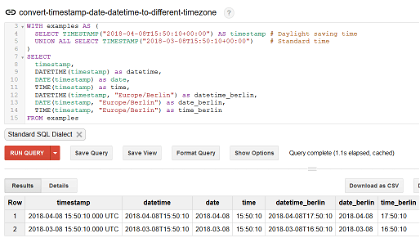


.webp)





Article link: bigquery substring after character.
Learn more about the topic bigquery substring after character.
- BigQuery Substring How-to Guide – Coupler.io Blog
- String functions | BigQuery – Google Cloud
- Extract number or string after string in BigQuery – Stack Overflow
- SQL SUBSTR Function | BigQuery Syntax and Examples | Count
- How to use substring() function | Basics BigQuery Tutorial
- BigQuery Regex and Pattern Matching: 6 Major Things – Hevo Data
- Timestamp functions | BigQuery – Google Cloud
- BigQuery Substring, Left, Right, and Other String Functions
- BigQuery SUBSTR Function Simplified 101 – Hevo Data
- Bigquery Remove Specific Character From String
- How to Use substring() with Regular Expressions | BigQuery
- Using the Split Function in BigQuery | by Christianlauer | CodeX
- Substring function in BigQuery with examples – – RevisitClass
See more: https://nhanvietluanvan.com/luat-hoc/